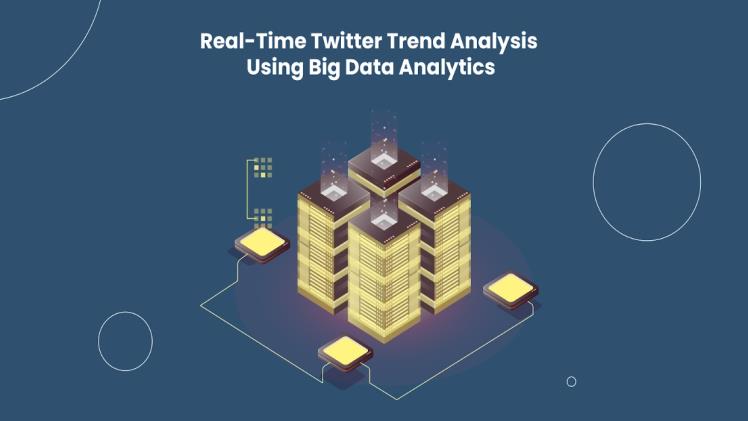Real-Time Twitter Trend Analysis Using Big Data Analytics

Sentient Pinnacle: Interpreting Real-Time Twitter Trends through Big Data Analytics Proficiency
Big data refers to an enormous and complicated collection of information that is challenging to process or evaluate using conventional techniques. Text, numbers, photos, videos, and other types of data are included in this. These come from a variety of sources, including social media, sensors, and transactions. Any business looking to succeed in a cutthroat industry must be on the front lines given the accelerating rate of digital transformation. Social media networks like Twitter, are a goldmine for real-time data and client feedback. Big data analytics becomes essential for companies that want to extract valuable insights from these enormous volumes of data. Twitter is a microcosm for real-time conversations. It has over 330 million monthly active users and approximately 500 million tweeted daily. Big data companies now use Data Analytics – a technology that makes possible the management, analysis, and understanding of huge volumes of data instantly. Now we will move further to know more about how big data plays a role in Real-time twitter trend analysis.
Genesis Entities in Big Data, Forging New Real-Time Analytical Horizons
This data revolution is now being pushed ahead by a group of innovative big data company, who have become its torchbearers. The companies involved are focused on creating revolutionary analysis tools and solutions which help the company to derive valuable nuggets of information from the discord of social media gossip. There are three giant monopoly tools in the globe which are DataRobot, Cloudera, and Databricks. The first one, DataRobot has emerged as one of the early adopters of the big data landscape by developing an automated machine learning platform for excellent results in predictive analytics. Companies can now quickly identify emerging trends, sentiment shifts, and consumer preferences through the inclusion of Twitter data streams in their algorithm.
Businesses with a desire to store and process large-scale Twitter data in one place can use Cloudera, which has made its mark on the market as an effective data management and analytic system.
Companies are enabled to do in-real time sentiment analysis, trend forecasting, as well as identifying key influencers with the help of Cloudera’s advanced analytics capabilities. With such capabilities as integrated analytics, Databricks, an industry leader, has transformed how data is processed and analyzed by enterprises. Businesses can incorporate Twitter data in their unified system and then derive actionable insights from these data that will promote success. Armed with insights gleaned from real-time Twitter trend analysis, businesses can make data-driven decisions that resonate with their target audience. For instance, a fashion retailer might adjust their inventory based on trending styles, while a marketing agency could refine their campaign strategies in response to evolving consumer sentiments.
Semantic Epochs: A Deep Dive into Real-Time Twitter Trend Dynamics with Big Data Analytics
Many big data companies use web scrapers as well as APIs to retrieve tweets in live streams. This means that the data remains current and up-to-date in real time. Choosing certain keywords, hashtags, or user profiles can be very critical because it assists in focusing on particular areas that have the necessary information. Such raw Twitter data may appear noisy and unstructured, with the presence of additional characters, symbols, or abbreviations. These include such techniques as text normalization, tokenization, and sentiment scoring. The second step is the interpretation of the tweet’s emotions. Understanding how the public feels about specific subjects, products, and brands is vital. A lot of the classification of tweets into positive, negative, or neutral categories is done through machine learning models utilizing NLP features. Scalability and accurate sentiment analysis are possible through this automation.
Topic models and time-series analysis are used for detecting emerging trends in Twitter’s ecosystem. Topic modeling is used to sort tweets into clusters, which then change as a result of time-series analysis. Big data analytics informs this pulse by monitoring users’ engagements and thus identifying those active in particular areas or niches. Such influencers can positively affect the visibility of a given product in specific markets. Partnering with influencers is a way to get in touch with a well-defined and loyal audience; this is a strong approach to increasing companies’ outreach. Real-time insights are among the strong advantages of big data analytics. This allows companies to make timely and informed decisions. The information is presented in reports and dashboards so users can perceive all trends and opinions that form the market in seconds.
Profiling Twitter Trends via Cutting-Edge Big Data Analytics
Real-time Twitter trend analysis is being driven into a new era of dynamism and data-informed decision-making by big data analytics. Big data businesses with the newest technologies and solutions are driving this change. Businesses should now be better equipped to navigate the digital age so they can continue to be market leaders, thanks to the use of Twitter intelligence. The fact is that businesses must accept this paradigm shift as their only route to progressing into the digital era since they can no longer escape it. As a Big data company, we provide one of the best services in Big data analysis with experience and commitment.





